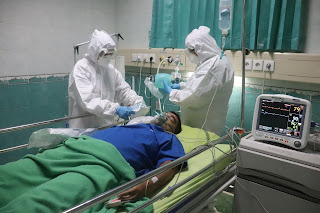Post-COVID-19 Nutrition (Part 1): When To See a Dietitian
You may know that I was working in an ICU when COVID-19 first hit my hometown. As a RDN & CNSC, I provided nutrition support to those patients who were on ventilators & couldn't eat by mouth.
However, I have since transitioned to working in a different facility. Sometimes, I am still working with patients with active cases but, more often, I am working with patients recovering after COVID-19 or other illnesses.
You may have heard the phrase "Long haul COVID", which refers to the negative health effects that someone experiences after the acute phase of COVID-19 infection. But, in my experience, there can be a prolonged recovery period after other critical illnesses & injuries as well, called post-viral syndrome or post-ICU syndrome.
Here's why: In general, illnesses & injuries trigger proinflammatory pathways. These trigger cytokine signaling (sometimes called the cytokine "storm") and increased metabolism (or catabolism).
This catabolic phase is the reason healthcare professionals recommend "feeding a fever." Your body literally burns more calories when you have a fever.
Often, when someone is sick, their muscles begin to breakdown. One reason this happens is because the body can utilize the muscles' protein stores if someone isn't eating enough when sick (which is often). This also happens because most people aren't moving around using their muscles as much when they're sick.
Patients may require a wheelchair or walker temporarily. They may need physical therapy after being hospitalized to build back up their muscles.
After COVID-19 or other illnesses requiring hospitalization, patients may need to work with a variety of other specialists, including wound care, speech therapy (who also provides swallowing therapy), dietitians, & occupational therapists.
There are many reasons that someone with severe COVID-19 should see a dietitian. Here are some of the reasons that I see patients after COVID-19 infections:
1. They were on a ventilator and now have trouble swallowing regular food.
2. They were on a ventilator and now have a feeding tube.
3. They developed "bed sores" or pressure injuries.
4. They have persistent GI symptoms, like nausea, diarrhea, or constipation.
5. They lost a lot of weight and/or lost their appetite.
6. They lost their sense of taste and/or smell and now have trouble eating.




